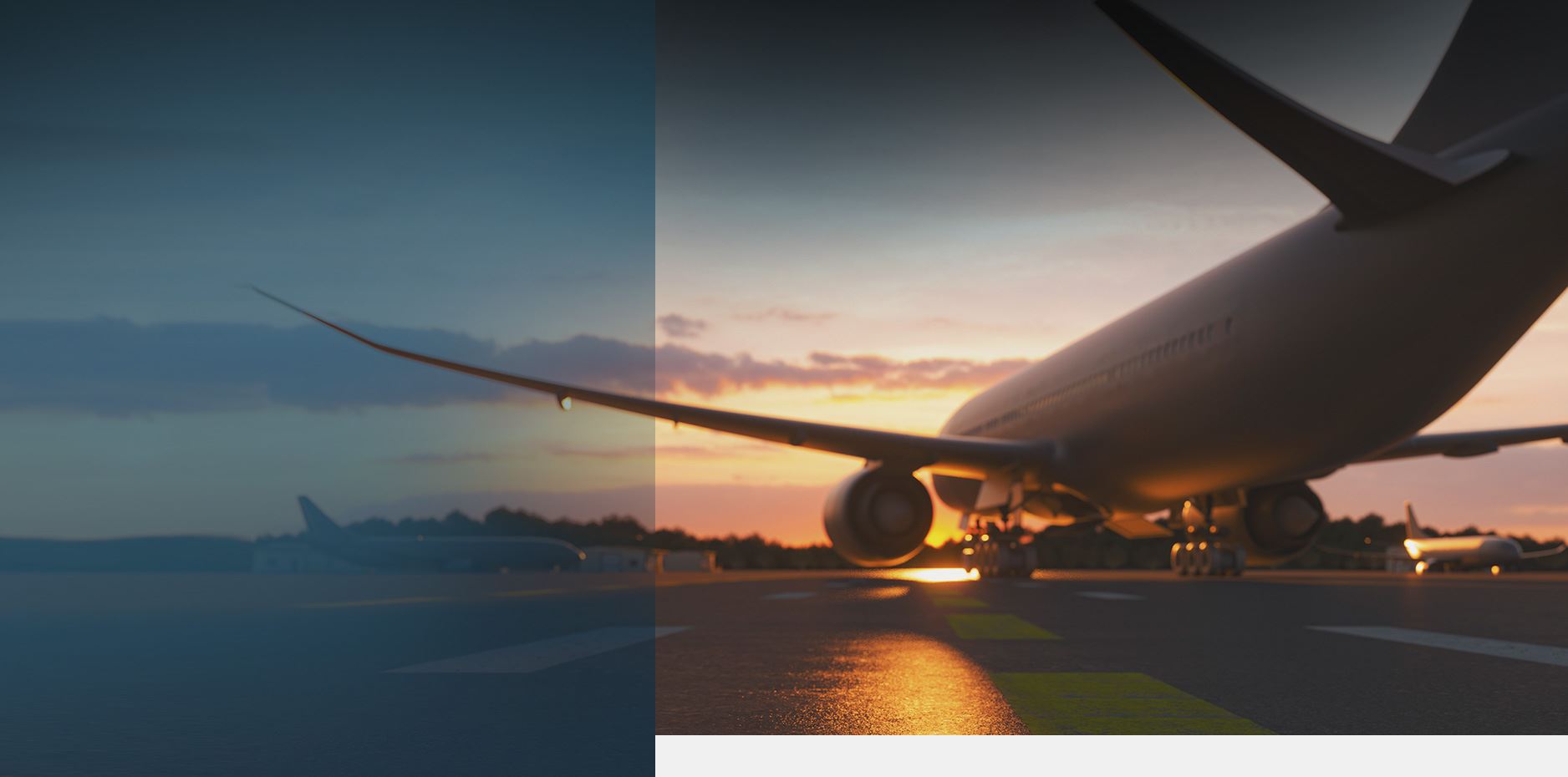
Airline Corporate Negligence
Attorneys Pursuing Accountability for Airline Corporate Negligence
A common factor contributing to plane crashes is airline corporate negligence. Many crashes can be attributed to decisions that were made in the boardroom, which have bearing on the actions in the cockpit. The airline is responsible for the proper training of its flight crew, maintenance of the plane and overall operation during flight. When the airline fails to meet its duties in any of these areas, disaster can strike.
With decades of experience handling plane crashes and helicopter accidents, we have seen an unfortunate trend in charter company and airline corporate negligence, tracing back to what could have been preventable deaths or injuries. This negligence often stems from a corporate culture that has consistently placed profits over safety. Charter plane companies and large airlines pressure their own employees in a number of ways in an attempt to increase their profit margins. Just as planes are adding more and more seats and offering fewer and fewer amenities in order to make more money on each flight, similar cuts are being made in common sense safety considerations in order to boost profits.
Wisner Baum is recognized as a leader in aviation accident law. Our firm has handled over 70 commercial airline crashes and incidents across the nation and internationally, including crashes involving airline corporate negligence.

Common Flight Safety Issues Created by Airline Corporate Negligence
- Flight Turnaround: Employees are pushed to be on time to the gate so that planes can be turned around faster-resulting in more profits for the airline. This means that pilots can be rushed during pre-flight safety checks if they are delayed in taking off. Any maintenance work or mechanical issues may also be hurried to meet the flight deadlines. When a flight is delayed it results in more paperwork, ticket cancellations or rescheduling for passengers and a host of other extra work that the company must do to make up for the late plane. This adds up to lost profits and everyone from pilots to mechanics can be pressured to get planes in the air on time, even if that means neglecting crucial safety steps.
- Aborted Landings: It is not uncommon for weather conditions or imperfect positioning to lead a pilot to feel that they should perform a “go-around,” which is the colloquial term for bypassing the airstrip and performing a second landing attempt. Because of airline corporate pressure placing an emphasis on timing, some pilots are hesitant to abort a landing even if they believe it to be unsafe. An aborted landing and re-attempt takes more time, consumes more fuel, and requires additional paperwork-which also takes more time and slows turnaround. Many pilots are caused to feel under pressure to avoid “go-arounds” because of fear it will look bad on their record, and will require uncomfortable demands for explanation by their superiors. A perfect example of this is the 1999 crash in Little Rock, Arkansas, American Airlines Flight 1420. The flight crew decided to land during a severe thunderstorm despite warnings by air traffic control. Eleven people were killed in the crash-the captain and ten passengers.
- Insufficient Training: Airlines are responsible for the proper training and supervision of flight crew. However, we have found that many pilots are not properly trained in all aspects of their plane. For example, airlines install automatic braking systems on planes, but often fail to provide sufficient training on the devices. Excuses are made that the avoidance of the system is intended to keep pilots in control by not allowing them to rely on automatic systems. The truth is that regular utilization of the auto brake system requires more brake maintenance and thus cuts into profits. The 2013 crash of Asiana Airlines Flight OZ214 was due, in part, to inadequate training of its pilots concerning the auto-throttle system. The pilots were confused by the system. They expected the auto-throttle to keep the plane at a safe speed. However, they did not know that it could not do so while at the setting they selected for it. Because they relied entirely on the automation, they did not look outside their windshield, and so failed to realize that they were too slow and too low during the landing approach. The plane’s landing gear and the tail struck the seawall that rises from the San Francisco Bay just before the runway threshold, resulting in the Boeing 777 crashing and breaking apart along the runway at SFO. Many passengers and crew were badly injured and three passengers were killed.
- Crew Resource Management: Too often, crews are not properly trained to safely coordinate their cockpit responsibilities. During the demanding and busy times of takeoff and landing, crews must be trained to focus exclusively on their respective tasks, and to recognize when all is not well. The training must encourage intervention when a crew member recognizes an unsafe condition developing, and this must be done regardless of rank. Thus, the training must empower the First Officer not only to call an unsafe condition to the attention of the Captain, but also to intervene if appropriate correction is not made. Failure to do so can result in tragedy.
- Flight Crew Stress: There are federal regulations in place governing how long a pilot can work without receiving proper rest. For decades, Wisner Baum has observed a substantial push back from airlines against any new or improved regulations meant to combat pilot and flight crew fatigue. Airlines complain that letting pilots sleep more would cost them money and consistently put their profits above passenger safety.
- Flight attendants are also responsible for many safety duties throughout the plane-from properly closing overhead bins to engaging or disarming emergency chutes and otherwise assisting during emergencies. Although they adhere to federal regulations requiring rest periods, the constant time changes, disruptions and other factors make it difficult for pilots and crew to find proper rest, even though they are “off-duty.” It goes without saying that acceptance of allowing sleep deprived pilots and crew to operating a plane, is an obvious act of airline corporate negligence. One of the causes of the crash of Continental Connection Flight 3407 near Buffalo, New York in 2009 was due to pilot fatigue. The NTSB determined that the crew was set up for fatigue and inattention before they ever took off, partly, because of the structure of the commuter airline business. Fifty people died as a result of this crash.
- Reducing Fuel Levels: Airlines are pushing pilots to fly with as little fuel as possible in order to increase profits. This leaves pilots carrying large numbers of people with little room for error, delay or changes in flight plans. If an airport is closed for an unexpected reason, pilots of commercial aircraft may not have enough fuel to make it to a second airport where weather conditions or other unexpected emergency might require extended additional time in the air. This could also make it difficult for a pilot to change course or turn back, should the plane experience mechanical issues. Several airlines have declared “fuel-emergencies” that have forced landings at closed airports or caused planes to turn back mid-flight due to not having enough fuel to safely reach their destinations. Federal Aviation Regulations (FARs) require sufficient fuel to get to the destination airport, and from there to an alternate airport, and an additional 45 minutes worth of fuel remaining for emergency situations.
- Paperwork Avoidance: Additional paperwork is sometimes avoided at all costs and as a result, some pilots feel pushed to fly when they feel the equipment is unsafe or to make landings that should have been aborted. Whether a flight needs to be rescheduled due to delay or a plane needs a new gate, additional paperwork will have to be filed. This is also the case when an incident is reported, a maintenance issue with the plane occurs or second landing attempt is required. This paperwork is time consuming and in an industry where time is money, flight crews are encouraged to do everything possible to avoid creating what the airlines view as “unnecessary” paperwork, even when that means their flights are less safe.
- Other Ways to Cut Costs: To cut costs, some airlines outsource maintenance to third party contractors who may not have any experience with that particular type of plane or aircraft part. This cost saving technique can result in shoddy maintenance and unsafe aircrafts and flights.
At Wisner Baum, our experienced aviation accident lawyers are trusted by colleagues, the press and-most importantly-by surviving crash victims and families of fatal crash victims. We have over 40 years of experience handling personal injury and wrongful death claims resulting from air disasters.* We find answers, offer caring support and pursue justice against airline corporate negligence and other causes of airline disasters. Based in Los Angeles, California, we represent clients throughout the United States and across the globe.
For immediate assistance, or to schedule an initial consultation or case evaluation with a lawyer experienced with the issues of charter plane and major airline corporate negligence, please contact Wisner Baum.
Our Case Results

-
$265 Million Settlement Fatal Train Crash
In 2016, Wisner Baum attorney Timothy A. Loranger and six other attorneys in the Plaintiffs’ Management Committee were able to secure a $265 million settlement for victims of the 2015 Amtrak 188 derailment in Philadelphia, one of the largest in the U.S. for 2016.
-
$3.5 Million Settlement Fatal Train Crash
Wisner Baum secured a $3.5 million settlement on behalf of an individual who died on a train.
-
$2 Million Settlement Fatal Train Crash
Wisner Baum obtained a $2 million settlement on behalf of a passenger who died on a train.
-
$2.8 Million Settlement Wrongful Death
Wisner Baum obtained a $2.8 million wrongful death settlement for a train passenger.

Client-Focused Representation
REVIEWS & TESTIMONIALS
We believe our track record speaks for itself. But you don’t have to take our word for it. See what our clients have to say about working with us.
-
"I Can’t Imagine a Better Law Firm"
Multiple lawyers recommended Wisner Baum to me and I have been consistently impressed with the quality of their work.
- Best Law Firms Survey -
"They Are About Changing the Systems..."
Wisner Baum are not only amazing attorneys but more importantly, they are activists. They are about changing the systems which got us into trouble in the first place. They understand their role in the process of making change.
- Kim Witczak -
"Top Legal Minds in the Country"
The Wisner Baum firm has some of the top legal minds in the country; they are driven, determined, trustworthy, ethical and passionate.
- From Best Lawyers® Best Law Firms





.2412301645015.png)